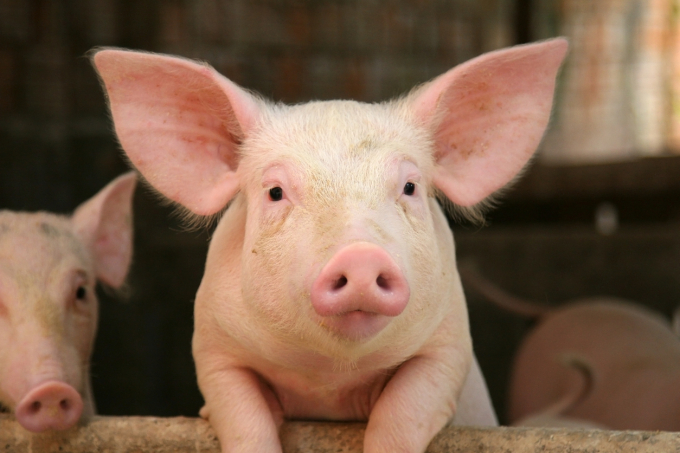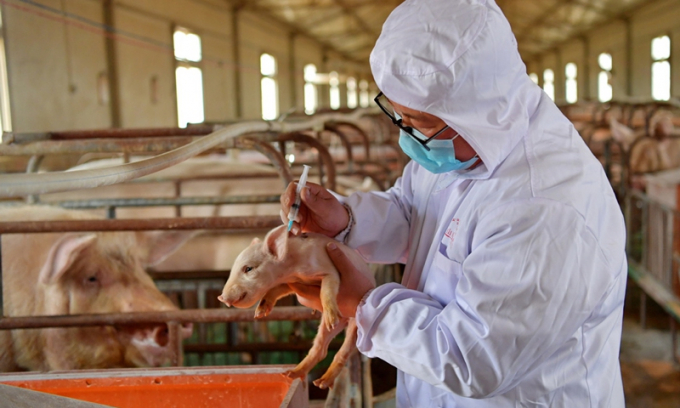November 20, 2025 | 02:37 GMT +7
November 20, 2025 | 02:37 GMT +7
Hotline: 0913.378.918
November 20, 2025 | 02:37 GMT +7
Hotline: 0913.378.918

"We have adopted various types of meal and other proteins to ensure there is sufficient feed for pigs and chicks," New Hope Liuhe said. Photo: IC
Leading hog and feedstock producers in China are using less soybean meal to lower the country's import dependence on the crop, as feed prices soar and trade tensions and the COVID-19 pandemic pose uncertainty for global trade.
New Hope Liuhe, China's major feedstock producer, has been using just 10 percent soybean meal in its farm feed products as of the end of April, compared with 13.2 percent in 2019 and 12.5 percent in 2020, the company told the Global Times on Thursday.
"We have adopted various types of meal and other proteins to ensure there is sufficient feed for pigs and chicks," New Hope Liuhe said, noting that a research at the company had conducted research on the matter even before changes in global trade.
On Monday, Qin Yinglin, the president of domestic leading pork producer Muyuan Foods Co, told a conference that the company has also suggested a low-protein diet for hog breeding, as the consumption of soybean meal to feed hogs "remains too high" in China.
The companies' efforts to reduce the use of soybean meal in hog feed came after the Ministry of Agriculture and Rural Affairs issued a notice in March calling on companies to reduce soy and corn content in animal feed.
The move followed China's record high imports of soybean and corn in 2020, despite the coronavirus pandemic. Official data showed that China imported about 100 million tons of soybean and 11.3 million tons of corn last year, growing by 11.7 percent and 135 percent year-on-year, respectively.
The ministry aims to reduce China's soy import dependence, while also minimizing the environmental impact, Wang Zuli, deputy researcher at the Institute of Agricultural Economics and Development at the Chinese Academy of Agricultural Sciences, told the Global Times on Thursday.
"The trend will be for a gradual reduction of soybean meal used in feedstuff, in order to meet the need of the situation - China lacks soybeans and soybean meal. If more companies follow suit, the country's need for soy may decrease in the long run," Wang noted.

An owner of a hog farm in Qiongjie county, Shannan, Tibet autonomous region, vaccinates a piglet on April 21, 2020. Photo: Xinhua
The push by companies also aims to reduce feed costs, which has been pushed up by surging prices of raw material, New Hope Liuhe said, adding that prices might remain volatile for a long time.
"In 2020, the factors of the coronavirus pandemic, temporary reserves and typhoons sent corn prices to a five-year peak. Soybean meal prices also climbed for a short period of time due to the shutdown of ports in South America due to the coronavirus," the company told the Global Times.
US-China tensions have also brought great uncertainties to bilateral trade of bulk commodities as well as global feedstuff trade, according to the company.
However, the situation has not reduced the amount of US soybeans bought by China at present, because soybean demand still exceeds supply, a person familiar with global trade said, speaking on condition of anonymity.
(Global Times)

(VAN) Flagship partnership secures additional GBP 16.9 million to strengthen forest monitoring, transparency and country support to 2030.

(VAN) After a turbulent year for international development, the aid and assistance landscape has shifted, with donors rethinking how, where and why they support sustainable development.

(VAN) A new tool for measuring the economic value of farm animal welfare improvements has been developed, potentially transforming how consumers, retailers and the government evaluate animal welfare policies.

(VAN) The Amazon rainforest could face a renewed surge of deforestation as efforts grow to overturn a long-standing ban that has protected it.

(VAN) Conflict and violence are driving extreme hunger in six major crises.

(VAN) European Union member states are seeking to postpone the implementation of the bloc's anti-deforestation law by another year, an EU negotiating draft dated November 10 shows.

(VAN) Nearly 30 new avian influenza outbreaks have recently been reported in Germany, both on commercial poultry farms and in backyard flocks.